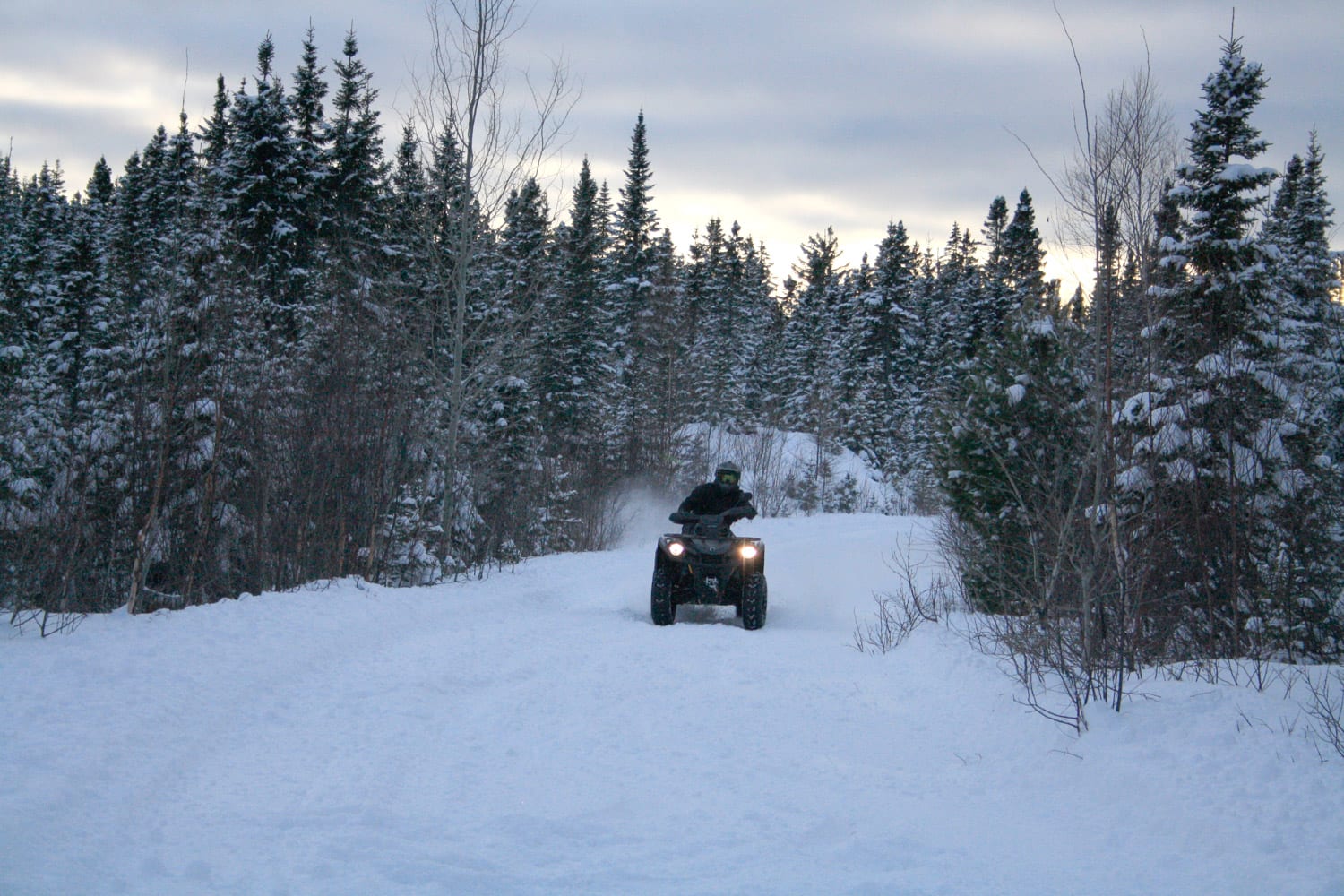Winter in Canada is a fantastic season that allows exclusive rides to enjoy the snowy beauties of nature. But there’s an invisible danger that lurks, that we must be aware and fight: the cold!
Many experienced ATV enthusiasts know the cold very well. But what about new users? Did you know that ATV sales increased by 29% in 2020 and 50% for November 2020? New users need to be aware that you don’t mess around with cold temperatures. Frostbite to fingers or toes can lead to amputation, and hypothermia can be fatal.
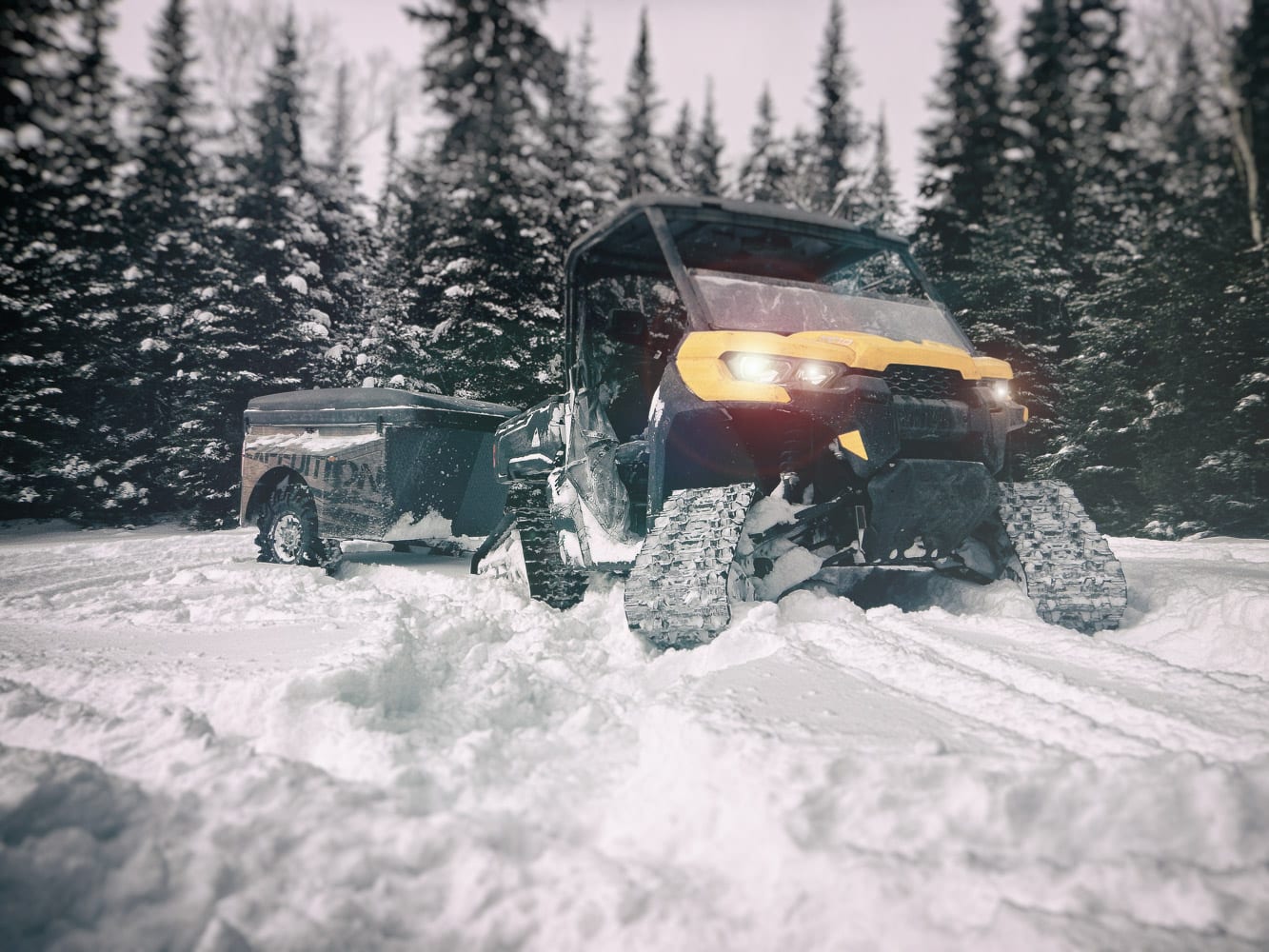
The body’s extremities are the most vulnerable, such as the top of the head, nose, ears, fingers, and toes. It is difficult for the blood to reach these extremities because the internal organs need more heat and reduce blood circulation.
While riding, the eyes must be protected because the cornea can freeze. The face skin too. The critical temperature is – 55 degrees Celsius with the wind chill factor. Driving at 45 km / h in -35 degrees will make you reach this temperature. In -40 degrees Celcius, moving at only 20 km / h is enough to get to -55 degrees Celsius.
The rest of the body can also suffer damage from the cold. Hypothermia is the most dangerous: body heat and internal temperature drop dangerously. The outcome can be fatal.
Fake news: alcohol does not warm up
Many think that alcohol warms up, but they are wrong. In fact, the effect is even the opposite. Yes, there is a feeling of heat immediately after drinking alcohol because it circulates quickly and dilates the epidermis’ superficial vessels. But alcohol removes the internal body heat, which lowers our body’s temperature, making us more vulnerable to the cold. Alcohol also relaxes muscles, preventing us from shivering, even though chills are unconscious movements of muscles intended to warm us up. Besides the fact that alcohol does not mix well with the cold, it also affects the driving ability! So please don’t drink and drive!
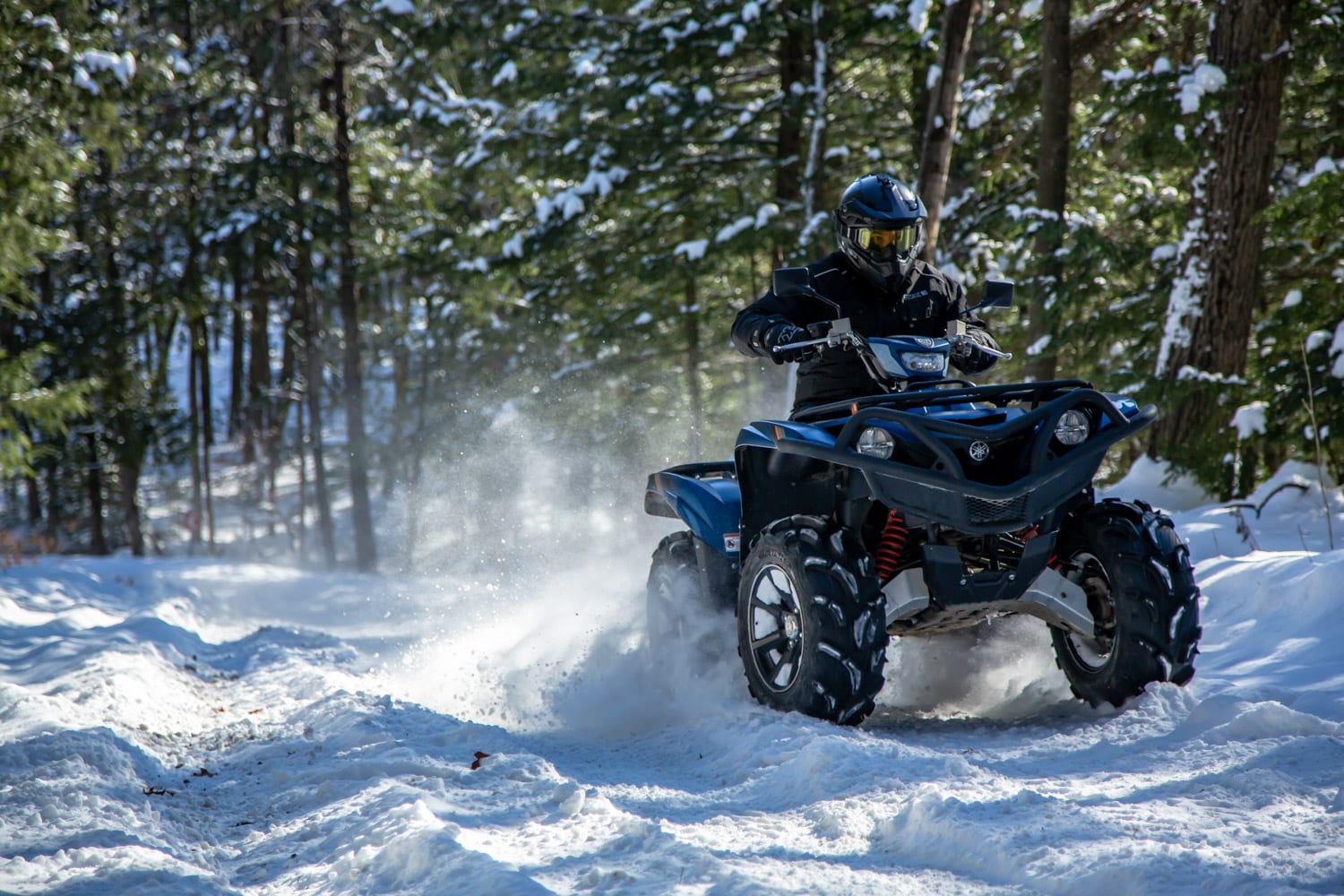
Clothing for winter ATV riding
Snowmobile clothing is ideal for winter ATV riding. But be careful to choose the right range of trail riding clothing. Backcountry clothing is not recommended as it does not provide the same amount of insulation. For example, a one-piece suit is perfect for preventing powder snow from infiltrating during off-trail riding, but it will not keep you warm because snowmobiling in the backcountry is a much greater physical effort than ATV riding.
A one-piece suit is also less practical when you have to satisfy some ‘basic’ needs. Separate pants and jacket a preferable for trail riding. Several heat insulation levels are available, and that information can be found on the garment’s label.
It is essential to have a breathable first layer (Gore-Tex, Sympatex, Hydrx, etc.) to evacuate body moisture while maintaining the external waterproofness.
The current trend is to wear three layers: the outer shell, a mid-layer, and a base layer. A cotton t-shirt is not a good idea for the base layer because it retains body moisture that will eventually turn into ice. You need an isothermal polyester fabric, which will wick the humidity outside, away from the skin. You should wear the base layer next to the skin. It should be comfortable but snuggly fitted to the skin.
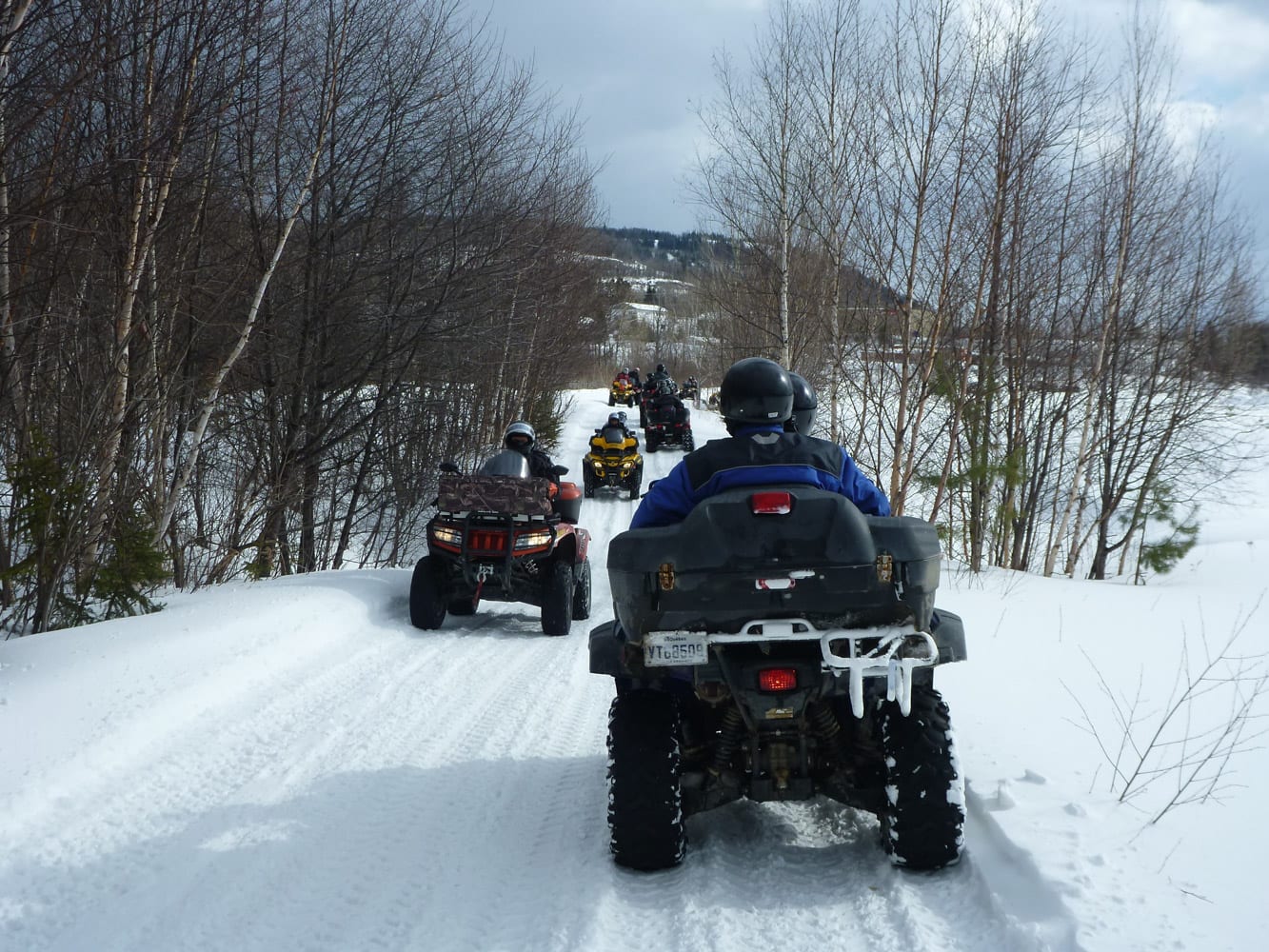
The mid-layer is intended to insulate from the cold but should also allow moisture to escape outside. Polyester is a good choice. You must take into account your mid-layer when purchasing the outer jacket so that it is not too cramped. This intermediate garment can be removed in the early afternoon, when the sun is warmer, and put back on before sunset.
It is important not to forget the extremities of the body. Boots should be warm, waterproof, and breathable; socks made of isothermal materials are ideal. Mittens effectively retain heat because they keep all the fingers together, but they are less practical than gloves and do not provide information signals for groups crossed on the track. It would be best if you prefer warm, waterproof, and breathable gloves. Even if ATV handles are often heated, you can add thin liner gloves. Do not forget ski masks, scarfs, and / or headliners, which will prevent frostbite on the neck and the face skin and reduce fogging in some cases.
For those who are more sensitive to the cold, most clothes can be electrically heated: soles, pants, undercoats, gloves, visors (against fog). Some are battery operated and use long-life lithium batteries. Other systems are connected by wires to the vehicle’s power supply. These won’t let you down, but remember to unplug them when getting off the machine.
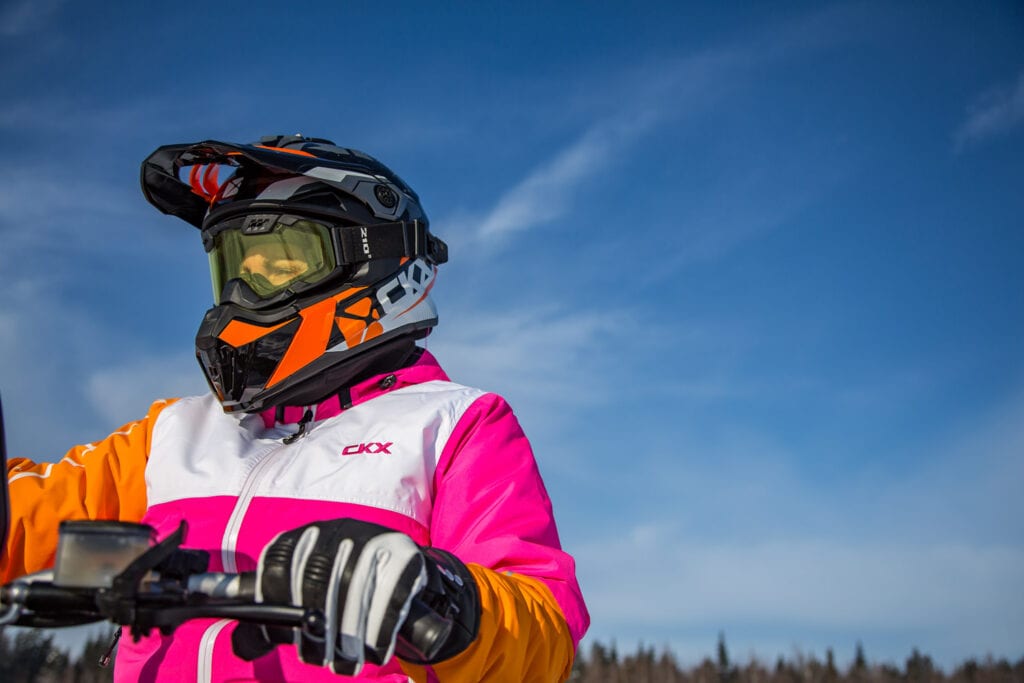
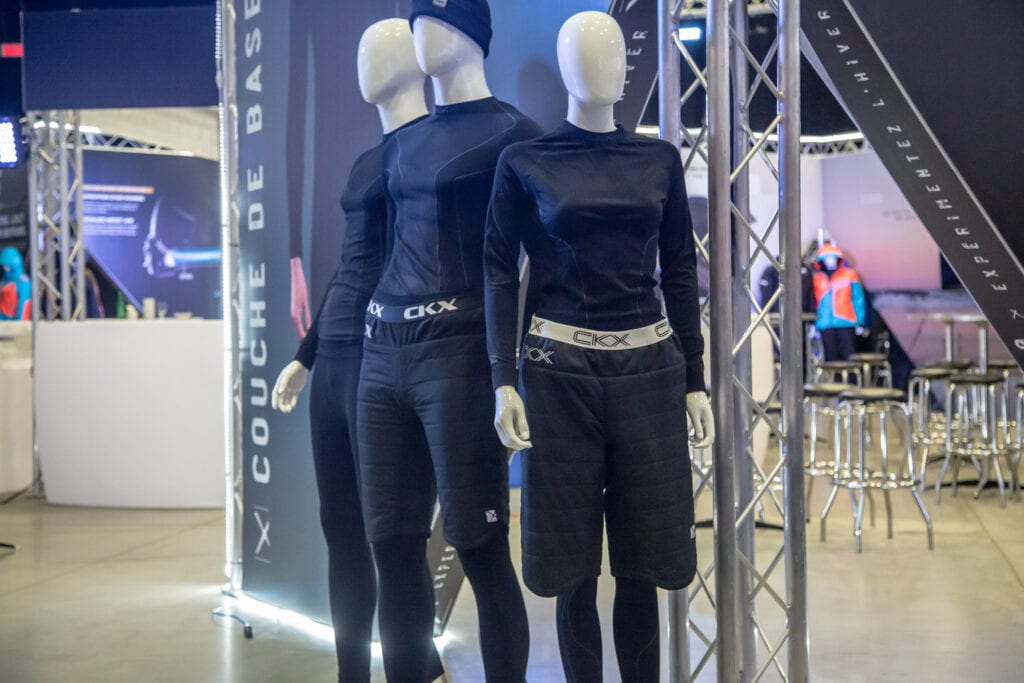
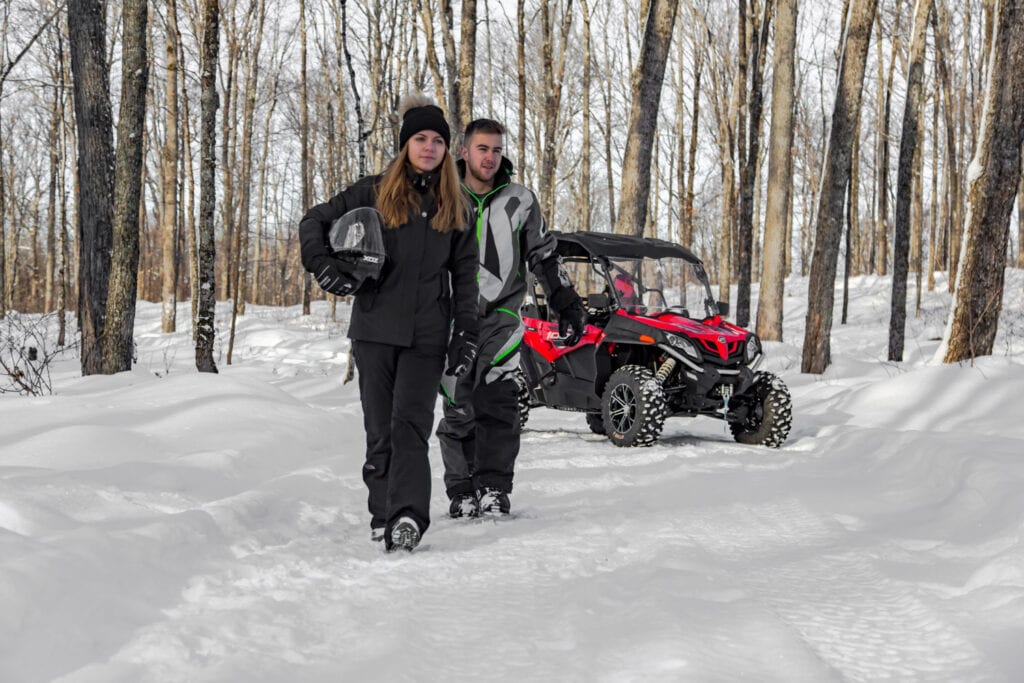
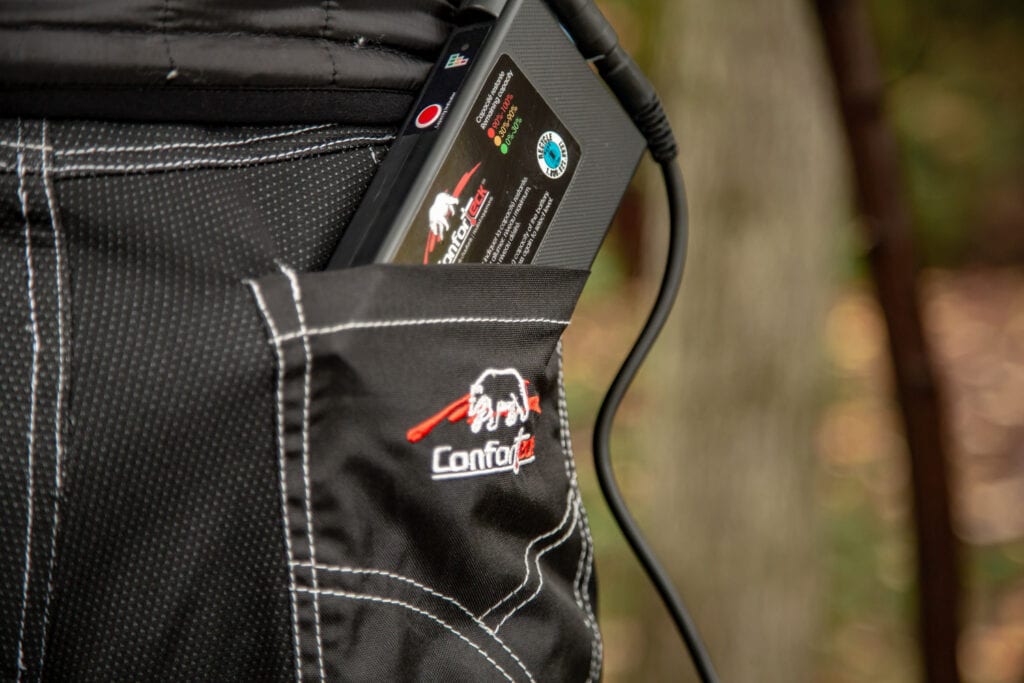
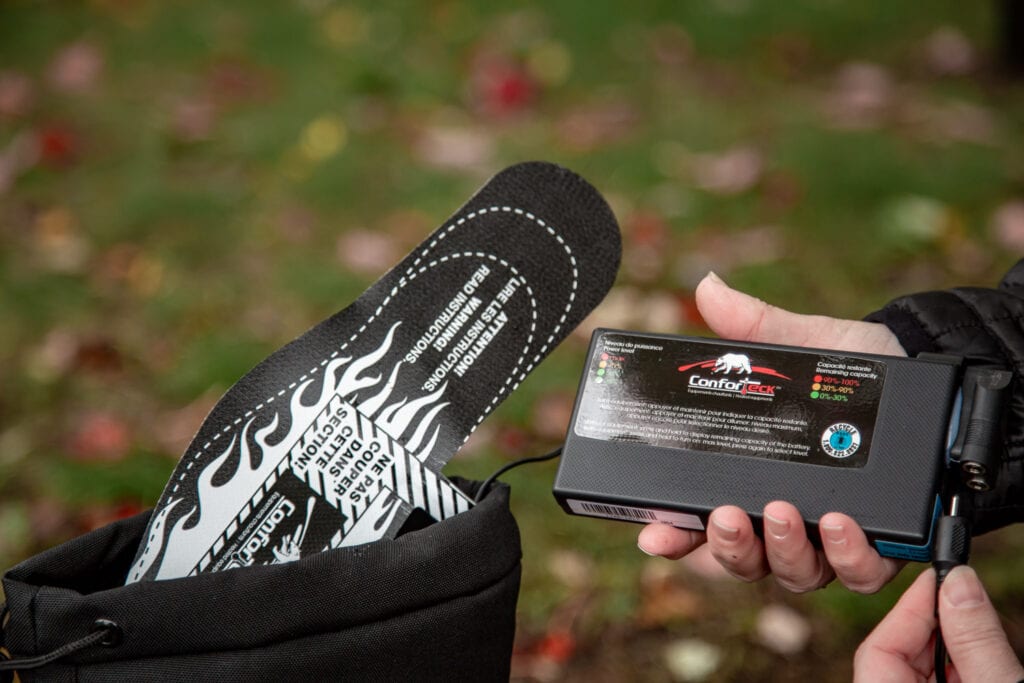
Also available, there are safety jackets that are specially made for ice water rescue. They are not boating individual life jackets. Because of the risk of hypothermia, you have to get out of the cold water quickly as life expectancy is less than fifteen minutes. These jackets have floatation aid made of air pockets that will help you stay on the surface. The jacket membranes are designed to retain body heat and reduce the risk of hypothermia. Klim, FXR, or Quebec brand Choko offer this incredible technology. These new types of vests and their technologies are evolving rapidly, and other manufacturers might offer new products as you read this. There are even airbag vests available; those are intended to protect against an impact. They deflate immediately after opening and are not meant to help you float, though.
Survive a fall in ice water
33% of snowmobile fatalities are drownings. There are no statistics for ATVs, but keep in mind crossing frozen water is always risky. However, organized trails are regularly checked. The smartest thing to do is to always stay on the marked path. If the ice ever breaks under your weight, here are some tips from a Wisconsin survival instructor:
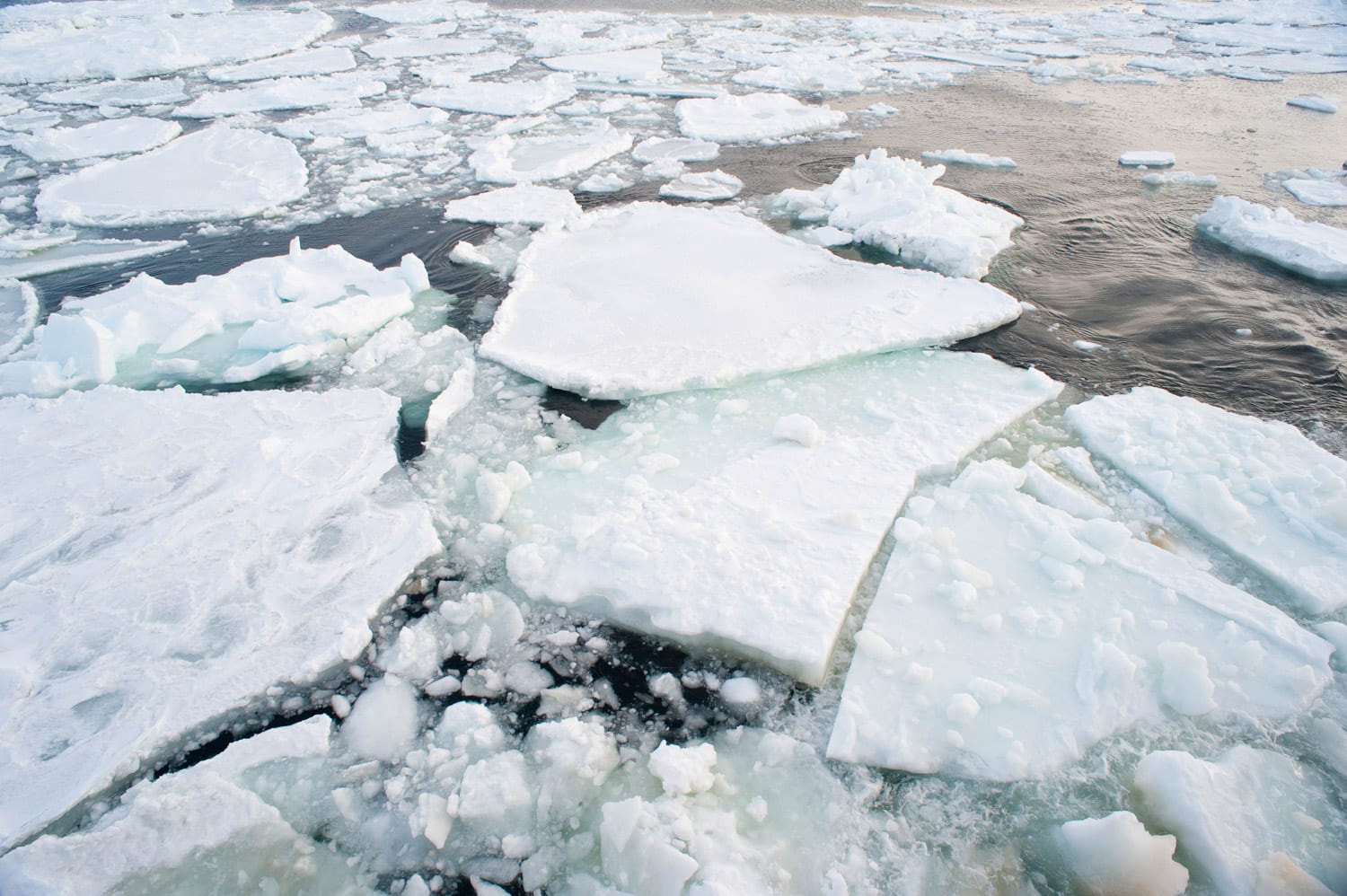
The first step is to survive the thermal shock that increases blood pressure, accelerates the heart rate, and blocks breathing. The secret is not to panic, don’t move unnecessarily, and stay calm. Reach the edge of the ice and grab hold of it. Stay zen, and just like a yoga session, breathe deeply through your belly. Doing this may seem a little weird given the situation, but lowering your blood pressure is vital, and this is accomplished by breathing deeply and slowly.
Step two, with your hands and arms spread out on the ice, kick your feet to swim and lift your body horizontally. You can now glide flat on the ice, crawling with your arms and legs apart to distribute your body weight. It is not advisable to stand up immediately, as the ice may break again under your weight. You can find a video explanation by searching ” How to survive a fall through the ice. “
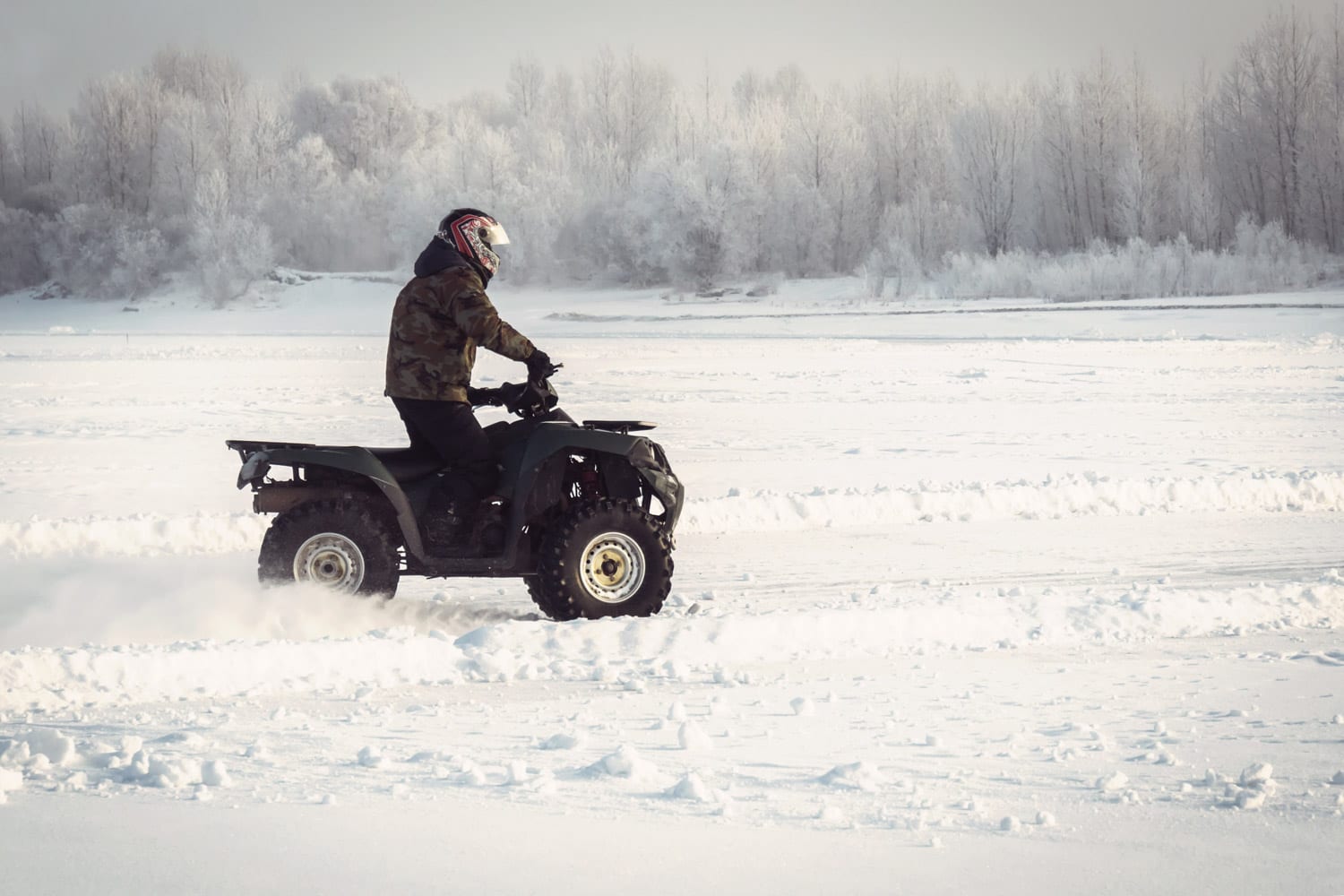
Plan your ride for the cold
Patrick Trahan, the organizer of Challenge Blanc raid and Enduro Snowbike, recommends taking some extra clothes in a waterproof bag: beanie, thin gloves, socks, headliner, and a mid-layer. If you ever get wet at -20 Celcius, you’ll be glad to find dry clothes.
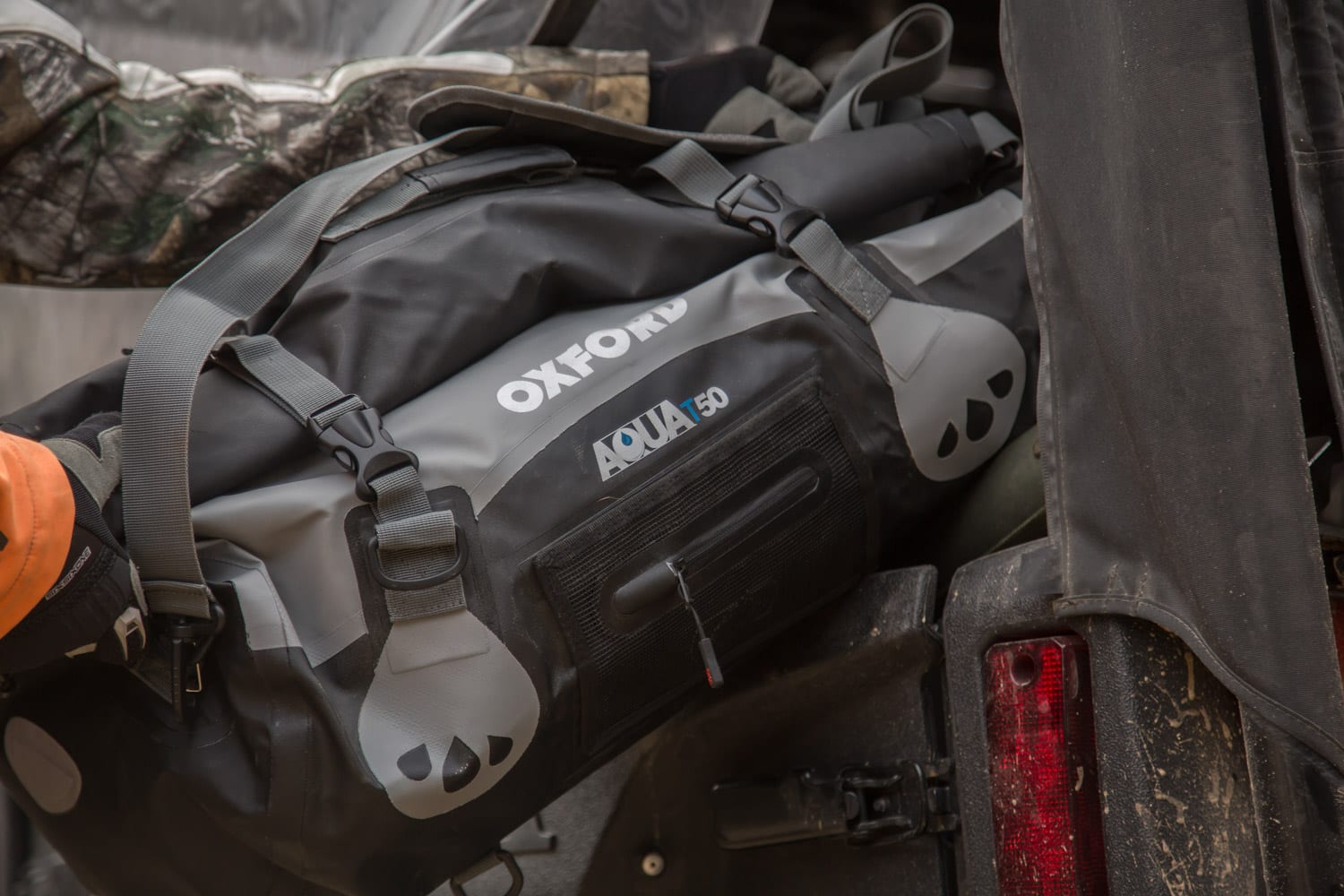
First aid kit
In addition to the usual First Aid items, bring waterproof matches to make a survival fire. To protect against the cold, a first aid blanket is very helpful and does not take up space. Bring lots of heat packs; you can slip them anywhere. Packaged in a waterproof bag, they react on contact with air and can last 18 hours. Also, bring an extra electric visor wire in case of a bad connection.
As the temperature changes throughout the day, the cold can be harnessed if you follow these guidelines. Enjoy your winter rides!


